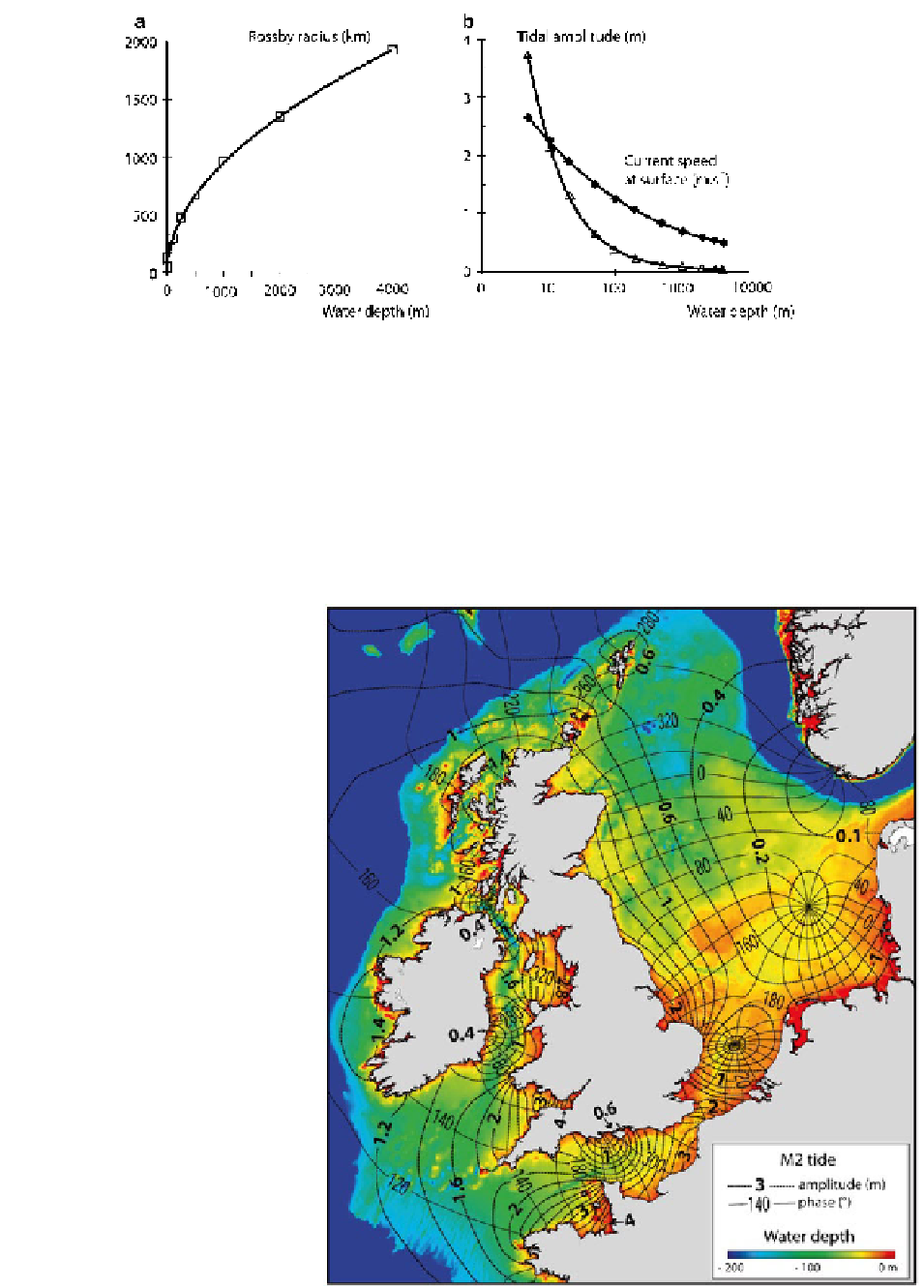Geology Reference
In-Depth Information
Fig. 13.1
(
a
) Rossby radius (i.e. the dimension of an amphidro-
mic system) as a function of water depth. The Rossby radius is
calculated as R = [(g*d)
1/2
]/f where g is the gravitational accel-
eration (9.81 m/s
2
), d is the water depth and f is the Coriolis
parameter (taken at 45° latitude: 10.3*10
-5
/s). Amphidromic
systems in shallow water have a smaller diameter than those in
the deep ocean. (
b
) Amplitude (half the tidal range) and related
current velocity at the water surface for a 0.5 m-high, incident
tidal wave as it shoals across a continental rise and shelf (see
Allen
1997
for details). The relationship between Ad, the ampli-
tude of the tide in deep water, As, its amplitude in shallow water,
and 'd, the rate of the decrease in water depth, is expressed by
As = Ad('d)
1/4
. The speed of the surface current, U, is given by
U = A(gd)
1/2
/d. In nature, the tidal amplitude and related current
velocity do not increase as much as is shown because of the
influence of bottom friction (see Fig.
13.3
)
Fig. 13.2
Map showing the
amphidromic systems in the
seas surrounding the British
Isles (After Sinha and Pingree
1997
; bathymetry from
GEBCO digital atlas, courtesy
of Martin Wells). Only the
M2 (principal lunar semi-
diurnal tide) is considered.
Cotidal lines are
perpendicular to the coast,
which means that the tidal
wave travels parallel to the
coast, creating tidal currents
that are also coast-parallel.
Further offshore (e.g. near the
Atlantic continental margin),
co-tidal (or phase) lines are
nearly parallel to the shelf
edge, bringing about currents
perpendicular to the isobaths.
The tidal range increases
outward from each
amphidromic point, with the
highest tidal ranges within
embayments such as the
German Bight and The Wash,
England

